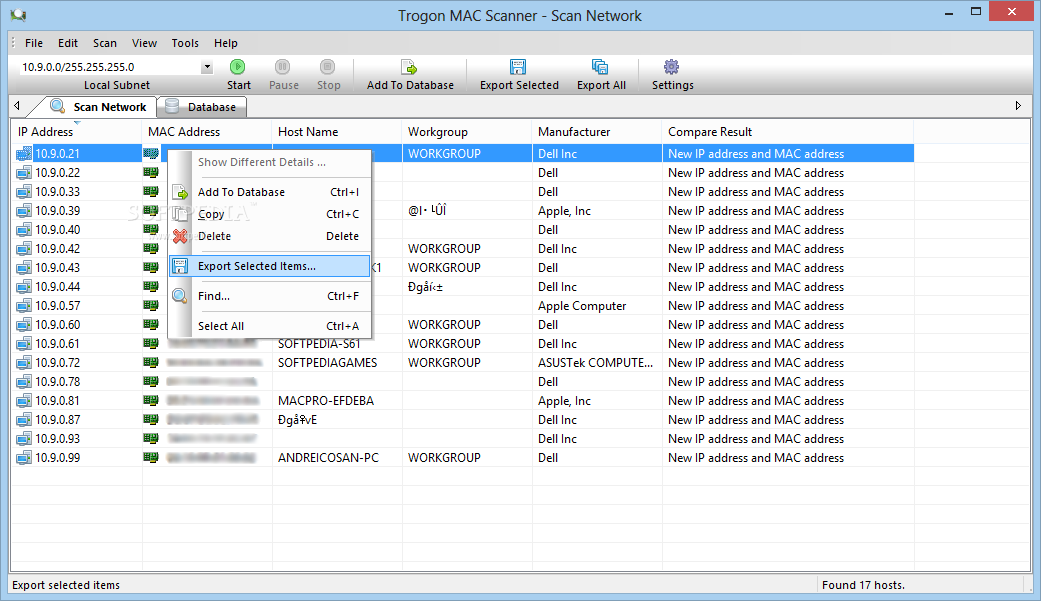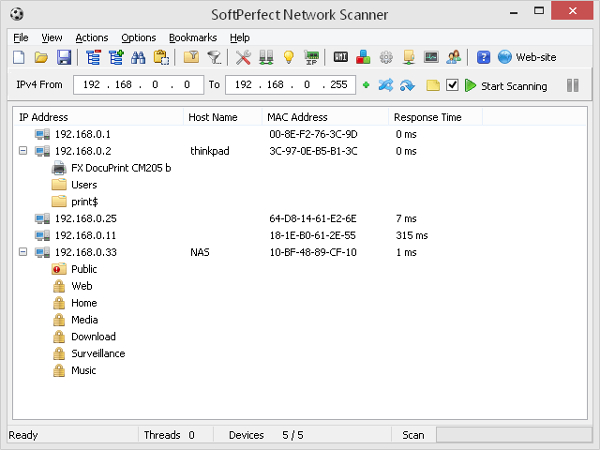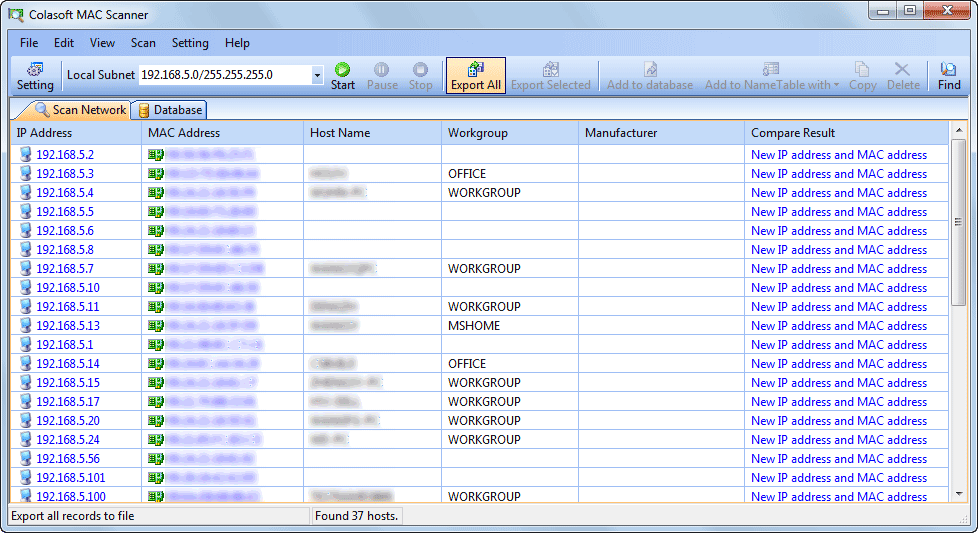

- NETWORK SCANNING PROGRAM FOR MAC HOW TO
- NETWORK SCANNING PROGRAM FOR MAC MAC
- NETWORK SCANNING PROGRAM FOR MAC WINDOWS
For example, if I’m at my iMac (local network IP address 10.0.1.6) and I want to know if I can reach my AirPort Extreme router (local network IP address 10.0.1.1), I type the address I wish to ping into the field on the Ping pane of Network Utility, then click the Ping button.

NETWORK SCANNING PROGRAM FOR MAC MAC
It’s used to see whether your Mac can communicate with another device with a known network address - otherwise known as “pinging” that other device. Probably the most widely-used and useful tools in Network Utility is ping. It provides a way to examine your Mac’s network routing tables by displaying a summary of packet types sent and received using common network protocols – TCP, UDP, IP, ICMP, IGMP, IPSEC, IP6, ICMP6, IPSEC6, and PFKEY. Netstat is a bit esoteric for most Mac users who aren’t network administrators.

This often manifests itself as a slow connection to websites, slow downloads, and so on. If a number of errors or collisions are visible, there’s a good possibility that there’s a poor connection that is dropping packets. The right side of the Info screen also shows how many data packets have been sent or received by the interface since the last time the Mac was restarted. Selecting any one of those network interfaces provides a wealth of information, including the hardware address (MAC - Media Access Control address, a unique number assigned to each network interface), the IP address (IPv4), link speed, link status, vendor, and model. For example, my late 2015 iMac shows Ethernet (en0), Wi-Fi (en1), Thunderbolt 1 (en2) and Thunderbolt 13 (en3). Info (see the image in the previous section) provides a drop-down menu that lists each of the network interfaces that are built into your Mac. Let’s look at each of the useful tools in Network Utility and how they can be used in troubleshooting.
NETWORK SCANNING PROGRAM FOR MAC HOW TO
Network Utility’s individual components can also be accessed from the Unix command line in Terminal, but that’s “beyond the scope of this course.” Just suffice it to say that if you really want to know the gory details of a command, you can type in “man name-of-command” (i.e., man netstat) and not only find out how to access that tool in Terminal, but all of the many options available. The last way? Just ask Siri - say “Launch Network Utility” and the app is immediately on your screen. The second is even easier click the Spotlight search icon (it looks like a magnifying glass) on the right side of the Mac menu bar, then type in “Network Utility” and press the return key.
NETWORK SCANNING PROGRAM FOR MAC WINDOWS
The first is to go to the Apple Menu, select About This Mac…, click on “System Report”, and then select Network Utility from the Windows menu. There are three much easier ways to find Network Utility and launch it without digging around in hidden folders. System/Library/CoreServices/Applications

If Network Utility is no longer in the Utilities folder of the Mac, where is it? Looking at the path to the app, it’s hidden away in: Where In The World Is Carmen Sandiego Network Utility? So where is Network Utility hiding these days, and how can it be used to troubleshoot network problems? Apple put all of these useful tools into a single app called Network Utility, which up until 2014 could be found residing in the Application > Utilities folder. Likewise, traceroute was always useful for finding out where in the long chain of bounces between computer, routers and servers that communications between machines was breaking down. Many old-timers wistfully remember the “fun” of typing in a ping command at the command line followed by an IP address, then waiting to see whether there was a response. Back in the early days of the Internet, things weren’t quite as stable as they are now so system administrators created a suite of tools to help troubleshoot issues.


 0 kommentar(er)
0 kommentar(er)
